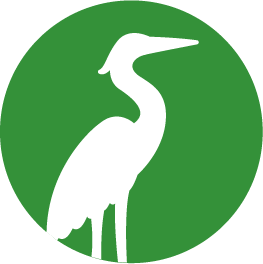Project Lead: Tom Prowse (University of Adelaide)
Read More
The diverse and abundant waterbird community of the CLLMM played a central role in the region’s listing as a Wetland of International Importance under the Ramsar Convention. The CLLMM is an important site for migratory shorebirds of the East Asian–Australasian Flyway. It provides foraging and breeding habitat for non-migratory waterbirds and acts as a habitat refuge for many species during drought conditions. The threatening processes impacting waterbirds that use the CLLMM operate at a range of scales from local (e.g. extreme salinity and eutrophication of the Coorong South Lagoon, feral predators, vehicle access) to regional (e.g. upstream water extraction and drought, terrestrialisation of wetlands in the broader network) and global (e.g. loss of staging habitat along the migratory flyway).
A series of sub-projects integrating field research of movement, modelling and citizen science to inform the management of the CLLMM and surrounding region to support populations of migratory and non-migratory waterbirds under climate change.
This project addresses four waterbird research priorities developed in collaboration with diverse stakeholders including First Nations and community groups, eNGOs, government agencies, and university-based scientists.
The project builds on substantial stakeholder relationships developed through past research and a recent community consultation process.
Key stakeholders with direct involvement in the research components include:
The project has a range of potential implications for management, including:
Shorebird Snapshot: Capturing body condition to understand habitat quality.
Migratory shorebirds make an incredible journey to and fom the Northern Hemisphere every year. Unfortauntely, their numbers have declined both globally and in the CLLMM region due to habitat change and human disturbance. Given the importance of the CLLMM region for shorebirds, this project aims to measure shorebird body conditions to assess habitat quality in these wetlands.
You can help by submitting migratory shorebird photographs from the Coorong, Lower Lakes and Murray Mouth (CLLMM) region. Read more below.
Sub-project leads and teams:
Movement ecology of waterbirds at multiple scales – Thomas Prowse, Ruth Cope, Steven Delean, Rebecca Boulton, Phill Cassey and Justin Brookes (University of Adelaide); David Paton and Fiona Paton (BioR); Heather McGuinness and Micha Jackson (CSIRO)
Quantifying demographic threats to beach-nesting shorebirds – Rebecca Boulton, Thomas Prowse, Ruth Cope, Phill Cassey and Justin Brookes (University of Adelaide); Ryan Baring and Diane Colombelli-Negrel (Flinders University); Keith Jones (SA Shorebirds Foundation); Sonia Sanchez Gomez (Birdlife Australia)
Conservation modelling for key waterbird species – Steven Delean, Thomas Prowse, Phill Cassey and Justin Brookes (University of Adelaide); David Paton and Fiona Paton (BioR); Ben Taylor (Nature Glenelg Trust); Sonia Sanchez Gomez (Birdlife Australia)
Waterbird body condition monitoring through community science – Phill Cassey, Thomas Prowse, Steven Delean, Ruth Cope and Justin Brookes (University of Adelaide); Sonia Sanchez Gomez (Birdlife Australia); Heather McGuinness and Micha Jackson (CSIRO); Keith Jones (SA Shorebirds Foundation)
First Nations culture and traditions are rooted within an ancient historical connection with country and countless generations of studying their local environment as a way of life. First Nations traditional ways of life, including land and water management, sustainable harvesting, and the conservation of local species can provide vital perspectives into the ways we manage the lands and waters into the future.
This project will work towards restoration, adaptation and impact reduction on the cultural traditions, obligations or history associated with the waterbird species of the CLLMM Region. First Nations people believe in “the living body’, comprised of the land (Ruwe), water (Ma:rnmani), people (Palak), animals and plants (Nga:tar) of the region. The body works in a delicate balance that is disturbed, can disrupt life on a large scale. This belief and knowledge system underpins the significance of waterbirds within the CLLMM Region. Waterbirds provide a traditional food source for First Nations people (e.g. meat or egg harvesting), they feed on local fish species (providing populations control on fish) and are described to help shape the land, lore, and law throughout First Nations creation stories, First Nations people have a responsibility to care for Nga:tar such as waterbirds, By monitoring waterbird behaviors, movement and other metric, First Nations people can better understand and manage the health of Nga:tar, Ruwe and Ma:rnmani in preparation for/during the forecast climate changes in the future.
This project will empower First Nations community with the knowledge and means to fulfill their cultural responsibility and traditions of caring for Ruwi, Pali and other Nga:tar.